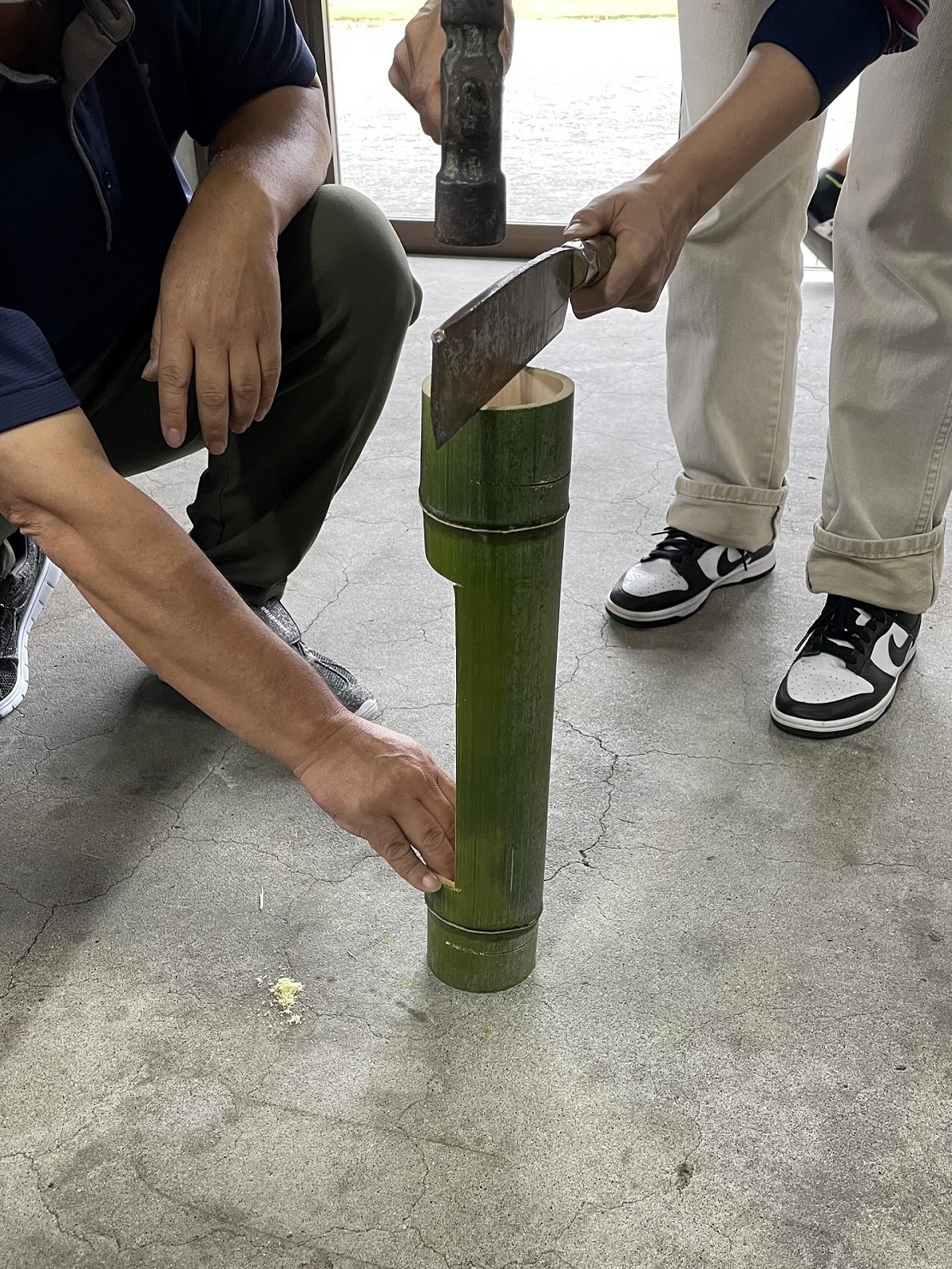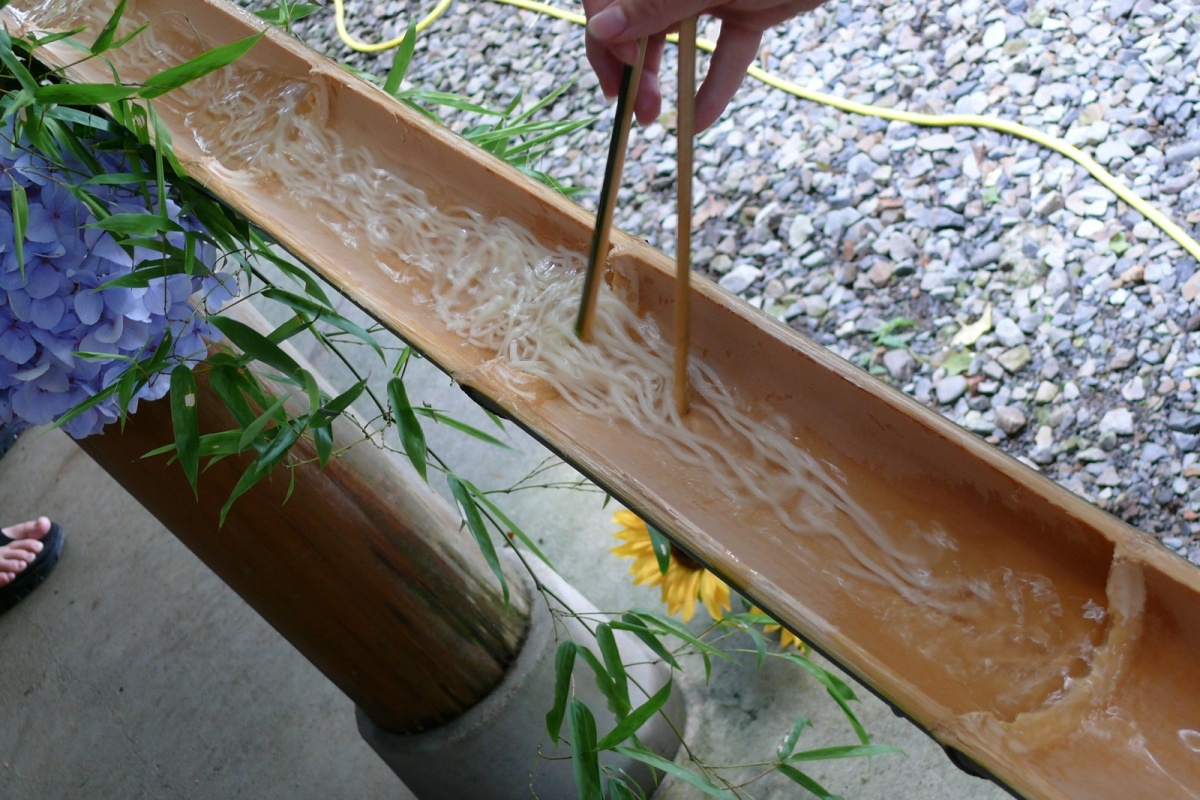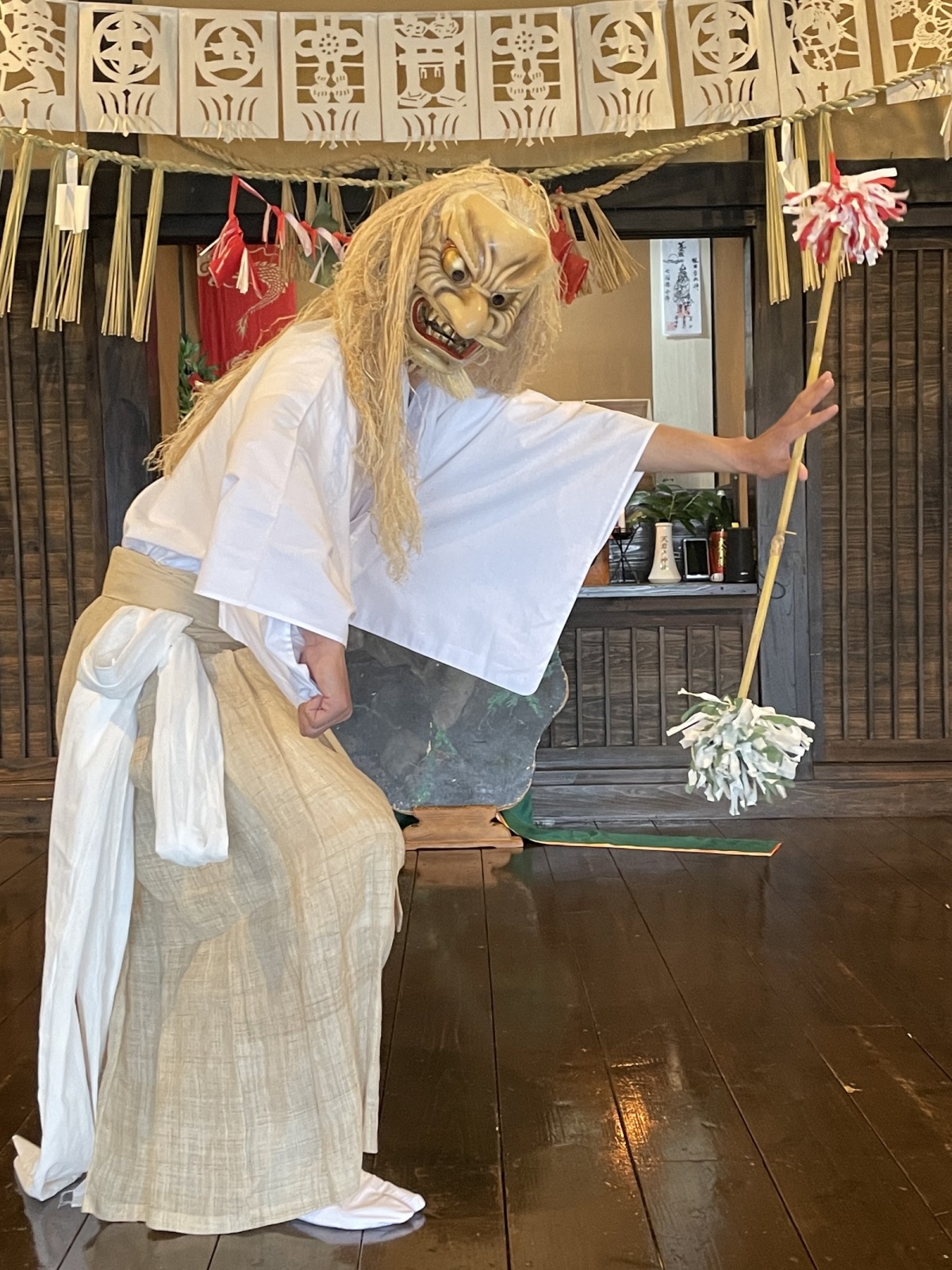Bamboo: the Secret to Takachiho’s Iconic Cuisine

The scenic valley of Takachiho in Miyazaki Prefecture has long been renowned throughout Japan for its bamboo cuisine. Some of the town’s most iconic and popular food and drink items could not be created without use of the ample plant. Kathryn Wortley introduces three dishes and explains the reasons behind their fame.
Takachiho: Kyushu Power Spot
Located in a scenic valley of Miyazaki Prefecture, Takachiho is renowned throughout Japan as a “power spot,” a place where visitors can be rejuvenated through access to stunning, abundant natural beauty and spiritual sites of importance.
The town’s crowning glory is Takachiho Gorge, a narrow passage carved by the Gokase River from a massive slab of rock, where waterfalls crash onto rocks below, releasing negative ions said to boost wellbeing. A favorite tourist activity is a boat ride through the gorge, taking in the verdant scenery below the massive walls.
At the end of one of the leafy gorge paths is a cave once inhabited by Amaterasu, the sun goddess of the Shinto religion. Today, this important mythological site is commemorated by the Amano Iwato Shrine, while Takachiho Shrine, another site believed to have hosted Shinto deities over the centuries, is located nearby.
Japanese have long visited Takachiho to nourish mind and spirit. But the town is also famous for its nourishing cuisine, particularly dishes that make use of the ample bamboo that can be found throughout the area. So what are the top three dishes to try and why are they so famous?
Using Bamboo

Making the vessels for the dishes from freshly cut bamboo pieces.
It’s not clear why bamboo has been used so prolifically for so many years in preparing traditional food and drink in Takachiho. Local people claim it is due to their deep connection to nature.
“Bamboo became a common culinary tool because Takachiho is a remote, somewhat difficult-to-access place on the border of Kumamoto and Oita prefectures,” says Hiromi Hidaka, a local guide for Takachiho. “Making use of the available natural resources was therefore essential, particularly for farmers.”
Indeed, farmers may have been the inventors of simple bamboo vessels, which they used to heat spring water and mountain-grown leaves to make tea during their days in the fields. Farmers are also thought to have begun using the vessels to cook a simple hot meal rather than return to their homes for lunch.

A local performance of "Kagura," a ceremonial dance. Notice the bamboo "prop" in the performer's hand.
Fellow local guide Takeshi Kai, meanwhile, partially attributes the use of bamboo to kagura, a type of Shinto ceremonial dance synonymous with Takachiho that uses bamboo as a decoration, prop and even tool for purification.
“As bamboo has long been such an integral part of people’s lives, perhaps it was only natural it would be used for cooking,” he says. "Of course, it may simply be because it makes food and drink taste even better.”
Today, Takachiho is proud of its bamboo culinary heritage and many places in the area serve its renowned dishes.
Noodle Rapids: Nagashi Somen

Eating Nagashi somen requires the diner to pluck the noodles from the swift waterflow down a bamboo chute.
Nagashi somen (flowing somen noodles) is a style of catching and eating somen noodles passing down a bamboo chute of cold running water. In the hot and humid months, in particular, it’s common to see diners in specialty restaurants scooping up piles of fast-flowing noodles as they swirl down the tube before dunking them in tsuyu, a dipping sauce made from fish stock, soy sauce and sugar.
The refreshing dish has its origins in Takachiho, and its inspiration came from the waterfalls along the Gokase River that flows through the area. According to the Takachiho Tourist Association, people in Takachiho once used Tamadare Falls to cool their freshly boiled somen noodles in summer. Local entrepreneur Mitsuyoshi Sato wanted to maximize on this custom by creating an small eatery serving these noodles at the falls, but the local public health department would not grant him a license to sell food that had run over bare riverbed rock.
Sato’s solution was to recreate the conditions by making half-pipe channels of bamboo on a gentle slope to carry the noodles and fresh water to customers. In 1955, he established Chiho no Ie, a specialty somen nagashi restaurant near Takachiho Gorge that remains popular today for its authentic bamboo chutes lining the dining tables. As the first nagashi somen restaurant in Japan, Chiho no Ie promises diners an authentic experience.
https://chihonoie.jp/en/
Kappo Dishes: More Bamboo Cuisine

The mixture of chicken, mushrooms, etc. is steamed over a charcoal fire . . .

The served in the same bamboo container.
Bamboo is also used in Takachiho as a cooking utensil to make kappo-dori, a chicken and vegetable stew. The word kappo is Miyazaki dialect for bamboo, thought to have come from the sound of water being poured from bamboo.
A hearty one-pot-style dish, kappo-dori comprises chicken, shiitake mushrooms and green onions topped with a copious amount of soy sauce, mirin, salt and pepper. It is steamed in a bamboo tube over a fire.
In the hills of Takachiho, visitors can try a complete kappo-dori experience, from crafting the cooking vessel and preparing the ingredients to cooking and eating the dish, which is served with rice, soup, pickles and green tea.
Experts take the lead in the more challenging aspects, such as cutting open the bamboo tube, and guide participants in every step of the process.
The Perfect Bamboo Sake Accompaniment

The preferred accompaniment to kappo-dori is kappo-zake, which is made by placing a bamboo tube filled with sake over an open flame until it is warmed. It is also possible to fill the tube with tea leaves to make kappo-cha.
As the bamboo heats up, its subtle aroma and flavor is transferred to the food and drink, giving it a natural sweetness.
Creating these kappo dishes takes such time and care that they are today considered an expression of hospitality in Takachiho and served on special occasions such as festivals. Audiences of kagura (literally “entertainment for the gods”) for example, are traditionally served kappo-dori and kappo-zake as a form of welcome and celebration.

A spiritual ritual practiced primarily in western Honshu and southern Kyushu, kagura involves performances of sacred traditional dances and music intended as prayers for a good harvest and to ward off natural disasters. It is recognized as a folk cultural asset of Japan and held every night of the year (even on holidays) at Takachiho Shrine for local people and visitors alike.
Kappo-dori and kappo-zake or kappo-cha can be made and enjoyed at community facilities in Takachiho. For details, please contact the Takachiho Tourist Association. https://takachiho-kanko.info/en/



